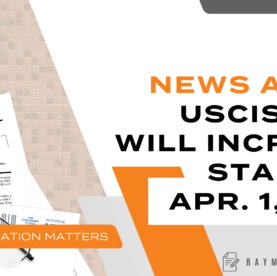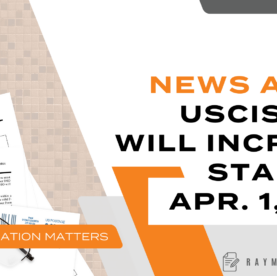USCIS Makes Significant Changes to Handbook for Employers: Guidance Completing Form I-9

United States Customs and Immigration Services (USCIS) made significant changes to the “Handbook for Employers: Guidance Completing Form I-9.” Form I-9 itself was updated on October 21, 2019.
A Recap of the Important Changes Made to Form I-9
The changes clarified who can serve as an authorized representative to correspond with revisions in the Form I-9 Instructions. The change further clarified that the second List B document in the List of Acceptable Documents does not include the driver’s license or ID card issued by a state or outlying possession of the United States to correspond with revisions in the Form I-9 Instructions.
The Form I-9 revisions also clarified that the Employment Authorization Document issued by the Department of Homeland Security (DHS) in the List of Acceptable Documents does not include Form I-766, Employment Authorization Document, from List A to correspond with revisions in the Form I-9 Instructions.
Form I-9 Employer Guidance
Employers should enter the expiration date changes that occur due to the automatic extensions of documents. There were also instructions to have employees cross out and initial information in the “Alien Authorized to Work Until” expiration date field in Section 1. This change will provide more clarity in a Form I-9 audit.
The certificate of eligibility for nonimmigrant student status is no longer required. USCIS has revised the cap-gap extension document requirements, which now better aligns with the regulations. Employers will now enter receipt number from Form I-797C, Notice of Action, as the employee’s Document Number in Section 2.
New Content and Major Clarifications Added
New guidance has been added on how to complete Form I-9 with EADs automatically extended by Federal Register notices. There is also guidance on verifying employment authorization for Native American employees that are born in Canada. Finally, there is guidance for state employment agencies who choose to complete Form I-9 for individuals they referred to. Guidance can be found for employees of individuals referred by a state employment agency.
There have been new clarifications provided to the Preparer/Translator Supplement; to the document expiration date that F-1 and J-1 nonimmigrant employees enter into the Section 1 “Alien authorized to work until” expiration date field; on how to calculate Form I-9 retention, retention guidelines, and electronic Form I-9 requirements; and for a review of prohibited Form I-9 practices and penalties, as well as the agencies responsible for enforcement.
In addition to the above-mentioned changes to the handbook, a few language updates have been made. The new guidance removed duplicate content, renumbered a few chapters, and merged certain sections to flow better. It also incorporated questions and answers into the body of the Handbook.
To learn more about this blog post or if you have any other immigration concerns, please feel free to contact me at rglahoud@norris-law.com or (484) 544-0022.





